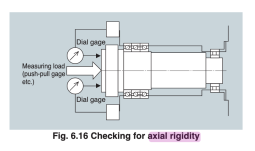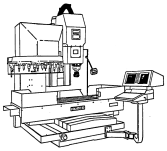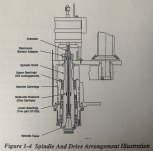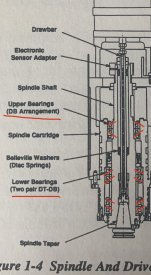404estop
Plastic
- Joined
- Apr 15, 2023
- Location
- Raleigh, NC
Hi all, new to the forum. 
I am a novice/hobbyist and I am trying to assess a CAT40 spindle. I believe the angular contact bearings are shot due to the vertical play even when the locknut is applied. My logic is that there should be no vertical play when preloaded otherwise there will be chatter on parts (but that's just a guess). The bearings sound and feel fine when spinning.
Here's a video demonstrating what I described:
So do these bearings need replaced or is the spindle fine?
I am a novice/hobbyist and I am trying to assess a CAT40 spindle. I believe the angular contact bearings are shot due to the vertical play even when the locknut is applied. My logic is that there should be no vertical play when preloaded otherwise there will be chatter on parts (but that's just a guess). The bearings sound and feel fine when spinning.
Here's a video demonstrating what I described:
So do these bearings need replaced or is the spindle fine?





 )
)

